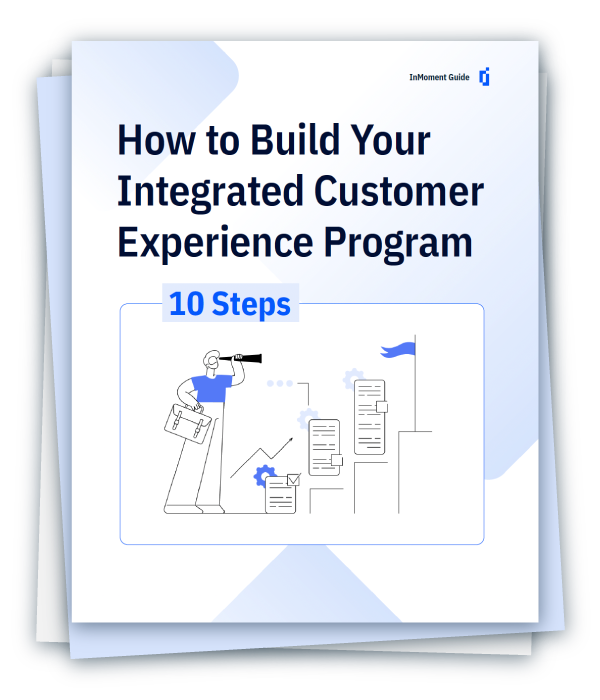Why Measuring Employee Experience Builds a Better Customer Experience
To better understand how to improve customer experience, companies need to harness the positive effects of employee experience. This starts with accurately measuring employees’ true feelings about their roles and the overall workplace. From there, a business can develop an actionable EX index and use it to focus their resources and drive impactful change.
Customer experience (CX) is often driven by one seemingly universal edict: The customer is always right. But forward-thinking companies are gathering data about what actually pleases customers—and it turns out employees’ own happiness is an integral factor.
InMoment’s own CX Trends research found employees are the single largest factor in making or breaking the customer experience. The data shows a positive link between employee experience (EX) and a great customer experience, in addition to significant financial gains like increased sales and the ability to maximize business performance. In fact, companies in the top quartile for employee experience see triple the return on assets compared to those in the bottom quartile.
Employees who feel engaged and valued will often remain loyal, productive members of their company. They’re also more likely to turn this positive energy toward tasks that benefit customers, whether they’re helping a shopper choose a new outfit or writing code for a customer-facing app.
To better understand how to improve customer experience, companies need to harness the positive effects of employee experience. This starts with accurately measuring employees’ true feelings about their roles and the overall workplace. From there, a business can develop an actionable EX index and use it to focus their resources and drive impactful change.
However, working for a company inspires emotions, purpose, and connections that can’t be measured by only asking simple questions. This means metrics like Employee Net Promoter Score (eNPS), which doesn’t target these factors and instead is rooted in gauging an employee’s enthusiasm, are inherently inaccurate. The eNPS metric is also based on the misconception that people are as likely to recommend a workplace as they are to recommend a product or service; in reality, they’re notably less likely to do so.
Therefore, companies need to apply behavioral science to truly understand employee experience and employee engagement, and how it ultimately drives customer experience. We recommend measuring the following five elements, which were partly informed by a definition developed by Dr. Wilmar Schaufeli, professor of work and organizational psychology, and his colleagues.
#1: Vigor
This is the energy an employee invests in their job, and the inspiration they draw on during tough times. Vigor measures an employee’s feelings surrounding their work rather than how they execute that work.
#2: Absorption
Absorption measures the way vigor appears in employees’ day-to-day work. In this sense, absorption is defined as the state of being so immersed in a task that employees have no desire to break away.
#3: Dedication
Dedication indicates employees’ long-term commitment and pride in their work. It shows how both emotion and action last over time.
#4: Culture
An employee can’t sustain high levels of vigor, absorption, and dedication without a strong, positive work culture to support them. Culture isn’t just benefits and perks; it’s a sense of fitting into a larger, more meaningful whole.
#5: Orientation Toward the Customer
A great employee experience does more than keep employees happy: It drives meaningful results for the customer. Companies should check in to make sure employees are directing their energy toward this key goal and others that are relevant and strategic to the brand.
When it comes to employee experience, employee engagement is only part of the story. That’s why, to gain actionable insights and improve customer experience, companies should measure external factors that drive employee behavior, as well as employee experience’s impact on customer experience at their specific company. Are employees directing their vigor at serving clients or impressing their managers? The answer matters to your long-term customer experience—and long-term success.
Learn more about the specific questions you should be asking your employees in this featured article!


